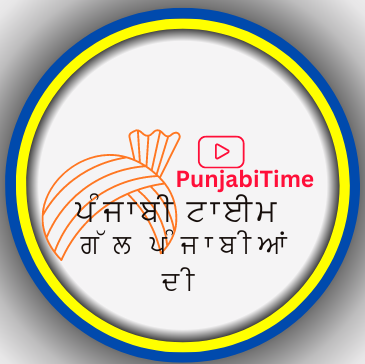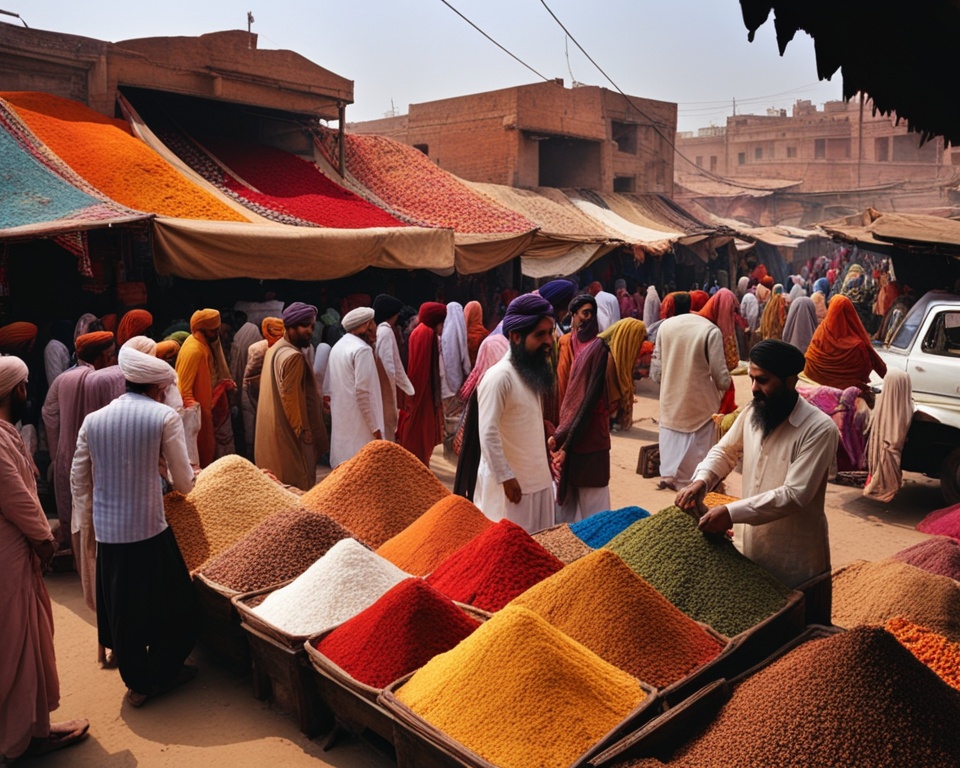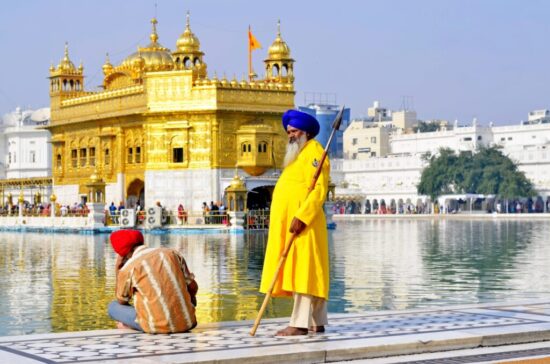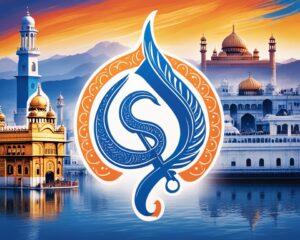
Exploring the Rich Heritage of Pinjab India and Pakistan : The Punjab region is an amazing area in South Asia. It combines the beauty of India and Pakistan. Known as historical Punjab, it’s famous for its deep culture. This culture is full of life and peace. It reflects Punjabi culture across the border. Both countries share a great heritage. This is thanks to the five rivers in the area. The name ‘Punjab’ means ‘five waters.’ It shows how important nature is here. This connects the wonderful history of Punjab India and Pakistan.
Cross-border Punjab shares stories of strength and variety. Its fertile land tells tales from villages to cities. This shared heritage goes beyond borders. This region’s laughter and traditions show an unbreakable spirit. They connect the past and present.
Key Takeaways
- Discover the symphonic blend of India and Pakistan’s Punjab region, fostering a cultural kinship.
- Explore the historical depths of the land once unified under the name of historical Punjab.
- Unearth the vibrancies of Punjabi culture, a lineage enriched by its roots in the Indo-European family of languages.
- Recognize the shared narratives spun by the crisscrossing of the rivers in cross-border Punjab.
- Appreciate the strength of a shared heritage that has steadfastly navigated through the ebbs and flows of time.
The Historical Tapestry of Punjab
Punjab’s story is a rich mix of cultures, languages, and traditions. This region’s deep history links closely to five major rivers. These rivers have fed both the land and its people for ages, through time, empire control, and India’s painful split.
The Five Rivers: Foundation of Punjabi Culture
The rivers Beas, Satluj, Ravi, Chenab, and Jhelum are Punjab’s heart. They support the area’s farms and its way of life. These rivers help the Punjabi language thrive. They also strengthen ties between India and Pakistan, based on land respect.
Sikh History and the Sikh Empire’s Legacy
The Sikh Empire under Maharaja Ranjit Singh was a high point for Punjab. It was a time of wealth and living together in peace. This era showed that people could unite beyond religion or ethnicity. It set a goal for modern Indo-Pak relations to aim for.
The Impact of the Partition of India on Punjab
The 1947 split of India changed Punjab deeply, in heart and on the map. It showed the area’s strength as people rebuilt their lives in new realities. This proves that shared roots can’t be cut by mere lines on a map.
Punjabi Language: From Sanskrit to Modern Dialects
The Punjabi language has grown from ancient Sanskrit roots. It’s known through various dialects like Doabi, Ghebi, Malwai, and Pahari. Punjabi connects people across India and Pakistan, showing their shared past.
| Region | Dialect | Writing System | Country |
|---|---|---|---|
| Doaba | Doabi | Gurmukhi | India |
| Majha | Ghebi | Gurmukhi | India |
| Malwa | Malwai | Gurmukhi | India |
| Pothohar | Pahari | Shahmukhi | Pakistan |
Punjab’s rich history teaches us about culture merging and growth. It highlights how India and Pakistan have common beginnings and a shared story.
Pinjab India and Pakistan: A Land of Vibrant Traditions
The Punjabi culture beats with life through its lively traditions and bright festivals. No event shows this spirit better than the festival of Baisakhi. Baisakhi marks the Punjabi New Year and the harvest season. It features colorful parades, energetic folk music, and traditional Punjabi clothing.
Punjabi men wear proud, richly hued turbans. Women’s clothes shine with Phulkari embroidery. Each celebration shows off Punjabi heritage.
Punjabi weddings mix serious rituals with fun celebrations. These events last for days, filled with old customs that show cross-border Punjab unity. The bhangra dance and the taste of spices connect India and Pakistan. They share a cultural tapestry and ancestry.
| Festival/Celebration | Traditional Attire | Popular Traditions |
|---|---|---|
| Baisakhi | Turbans, Phulkari embroidery | Parades, Folk dances |
| Punjabi Weddings | Patiala suits, Sherwanis | Roka, Varmala, Sangeet |
Punjabi traditions center on joy and community. They thrive everywhere. Punjab, split by borders but united by customs, continues to shine. It shows collective identity, unaffected by distance or time.
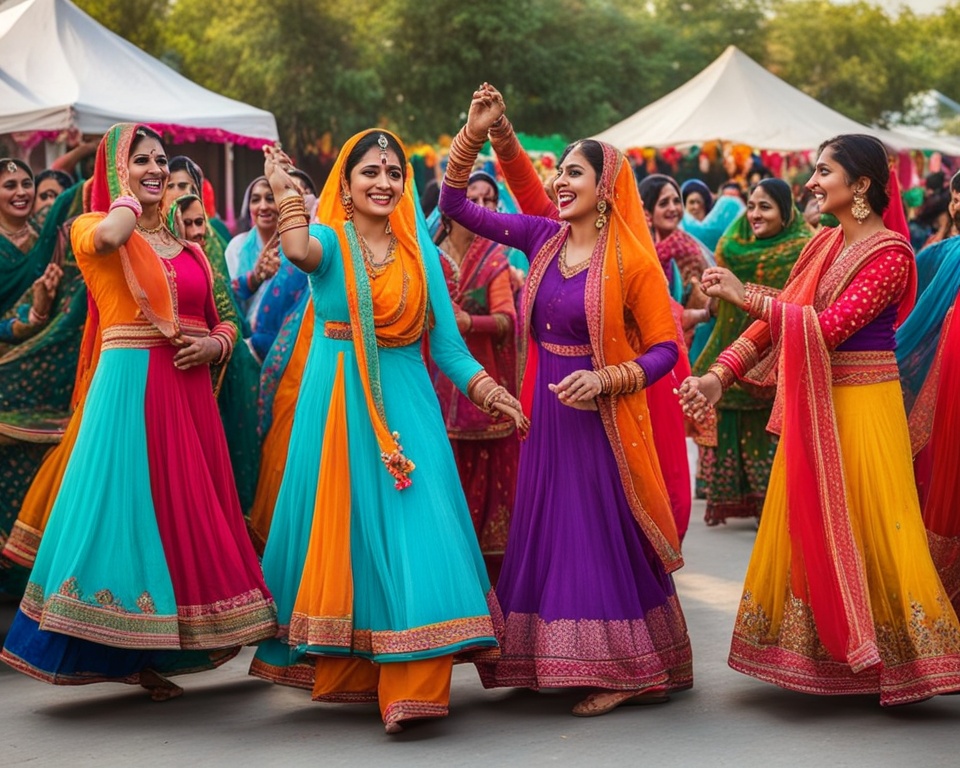
- Dancing to the vibrant beats of dhol at festivals
- Savoring the rich flavors of Punjabi cuisine that transcend borders
- Participating in the communal joy of weddings and harvest celebrations
The Punjabi culture shows the joy and strong spirit of its people. It weaves through life’s moments, from Baisakhi to weddings. These traditions form the heart of Punjabi identity worldwide.
Artistic Expressions and Cultural Significance
A tapestry of Punjabi artistic expressions paints the cultural scene. It blends vibrant Punjabi folk music with the energy of bhangra dancing. Adding to these are the fine skills of Punjabi craftsmanship. These arts draw from Punjab’s rich region. They give us joy and insights into the Indo-Pak area’s social and history.
Folk Music and Dance: Bhangra and Giddha
The heartbeat of Punjabi celebrations matches the dhol drum, putting bhangra dancing in the spotlight. Originally a joyful harvest dance, bhangra shows a community’s happiness with fast rhythms and movements. The enduring Punjabi folk music captures its people’s spirit.
Giddha celebrates Punjabi women’s joy with rhythmic clapping and poems. It creates a vivid mix of sound and movement.
Artistry in Punjabi Craftsmanship
The lasting impact of Punjabi craftsmanship shines in crafts like Phulkari embroidery. It’s cherished in both Indian and Pakistani Punjab. Each stitch tells folk tales with bright colors and detailed patterns. These decorate the area’s traditional dress, showing its rich culture.
Punjabi Cuisine: A Blend of Flavor and Tradition
Diving into Punjabi cuisine, we find a tasty mix of flavors. Each dish showcases the region’s cooking skills. Tandoori meats have a bold taste, while dal makhani offers comfort. These dishes use lots of butter, cream, and spices. They represent Punjabi culture’s warm, welcoming nature.
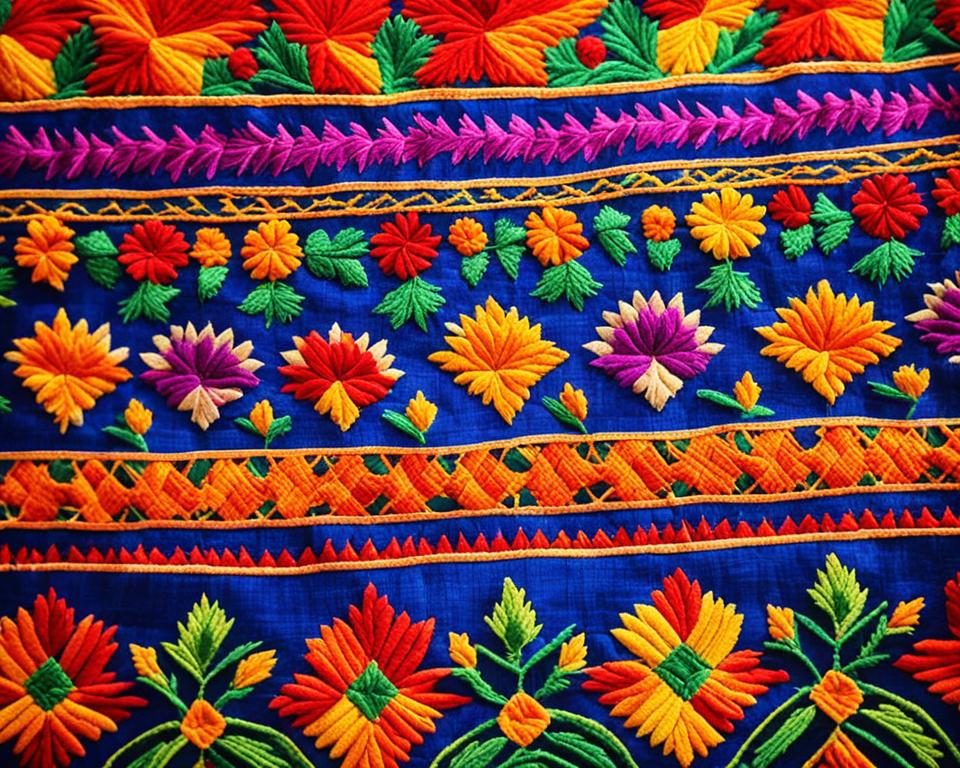
| Cultural Element | Description | Significance |
|---|---|---|
| Bhangra Dance | A high-energy traditional dance, often performed to celebrate the harvest. | Represents enthusiasm and unity within the community. |
| Phulkari Embroidery | A traditional embroidery style known for its vibrant patterns and colors. | Serves as a staple in traditional attires, symbolizing the artisanal heritage. |
| Punjabi Cuisine | A rich array of dishes characterized by hearty flavors and aromatic spices. | Forms an intrinsic part of the social fabric, bringing people together through food. |
The vibrant artistic expressions not only honor the shared heritage. They also help Indo-Pak relations through culture and art’s universal language. It shows the Punjabi people’s resilience and dynamic spirit. They keep inspiring with their age-old traditions and artistic heritage.
Conclusion
The Punjab region, which India and Pakistan share, showcases their lasting spirit and cultural preservation. This area has a shared heritage rooted in centuries of history. The lands show cross-border influences in art, food, and faith. These elements blend naturally in both countries. Despite global focus on division, Punjab shines as a symbol of unity.
The Punjabi diaspora spreads Punjab’s rich culture worldwide. Communities abroad keep traditions alive while adding to diverse cultures. Countries like the United States, the United Kingdom, and Canada witness this blend. Punjabis globally balance respecting their roots with modern life’s demands. This shows Punjab’s cultural impact and how it encourages open, diverse societies.
Punjab acts as a vibrant connection between India and Pakistan. It’s more than a place; it’s a bridge of Indo-Pak relations in culture. This celebration of shared culture shows Punjab’s and its people’s resilience. They charm globally by upholding traditions and sharing their culture. Punjab inspires cross-cultural unity, hinting at a lasting legacy.
Artistic Expressions and Cultural Significance
What is the historical significance of the Punjab region in India and Pakistan?
Punjab is a special place called the land of five rivers. It’s very old and important for culture and farming. It was part of the ancient Indus Valley Civilization. Many cultures have changed this area, making it very important for history and culture.
How has Sikh history contributed to Punjab’s identity?
Punjab’s identity is closely tied to Sikh history. In the 18th century, Ranjit Singh started the Sikh Empire. This time was known for its strong army and many religions. It really shaped Punjab’s culture and society.
In what ways did the Partition of India impact Punjab?
The Partition of India in 1947 split Punjab between India and Pakistan. It caused many people to move and changed the culture. But Punjabis kept their strong cultural ties, even with these changes.
Can you explain the evolution of the Punjabi language?
The Punjabi language came from Sanskrit and is in the Indo-European language family. It has different dialects in India and Pakistan. In India, it uses Gurmukhi script, and in Pakistan, Shahmukhi. Punjabi is a big part of the region’s identity.
What are the main regions of Punjab and how are they defined?
Punjab has three main parts: Majha, Doaba, and Malwa. They are based on where rivers are and how fertile the land is. This affects farming and culture in each area.
What role do the five rivers of Punjab play in its culture?
The rivers of Punjab make the land fertile for farming. This has helped one of the oldest civilizations survive. They also shape the culture, music, and lifestyle of Punjab.
What are the key features of the festival of Baisakhi in Punjab?
Baisakhi is an important festival in Punjab. It marks the beginning of harvest time and the Punjabi New Year. It is celebrated with dances, songs, and visits to Gurdwaras. For Sikhs, it also celebrates the start of the Khalsa.
How do Punjabi weddings reflect the culture of the region?
Punjabi weddings are big, joyful events with lots of traditions. They include music, dance, special clothes, and food. These events show the importance of family and community in Punjab.
How have folk music and dance like Bhangra and Giddha influenced cultural expression?
Bhangra and Giddha are important Punjabi dances and music. They show the happy, together spirit of Punjab. These forms are popular all over the world, influencing music and dance everywhere.
What are some examples of Punjabi craftsmanship?
Punjab is known for beautiful crafts like Phulkari embroidery and hand-woven shawls. These crafts show the artistic side of Punjab and are valued all over the world.
What makes Punjabi cuisine unique?
Punjabi food is full of flavor and uses lots of spices and dairy. Favorites include sarson da saag and butter chicken. The food is hearty and loved in many countries.
